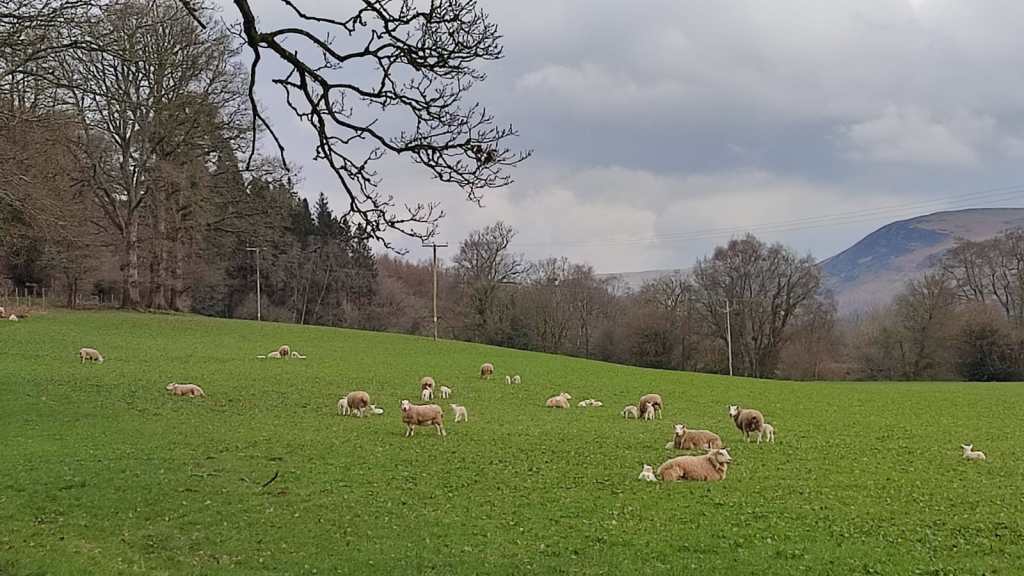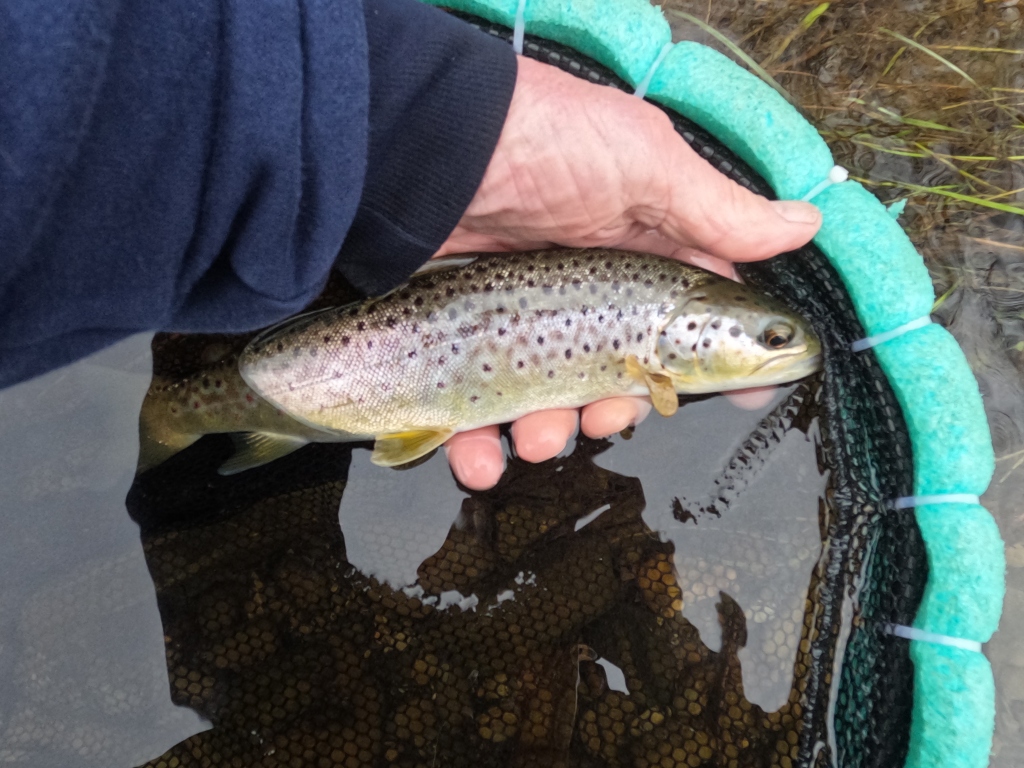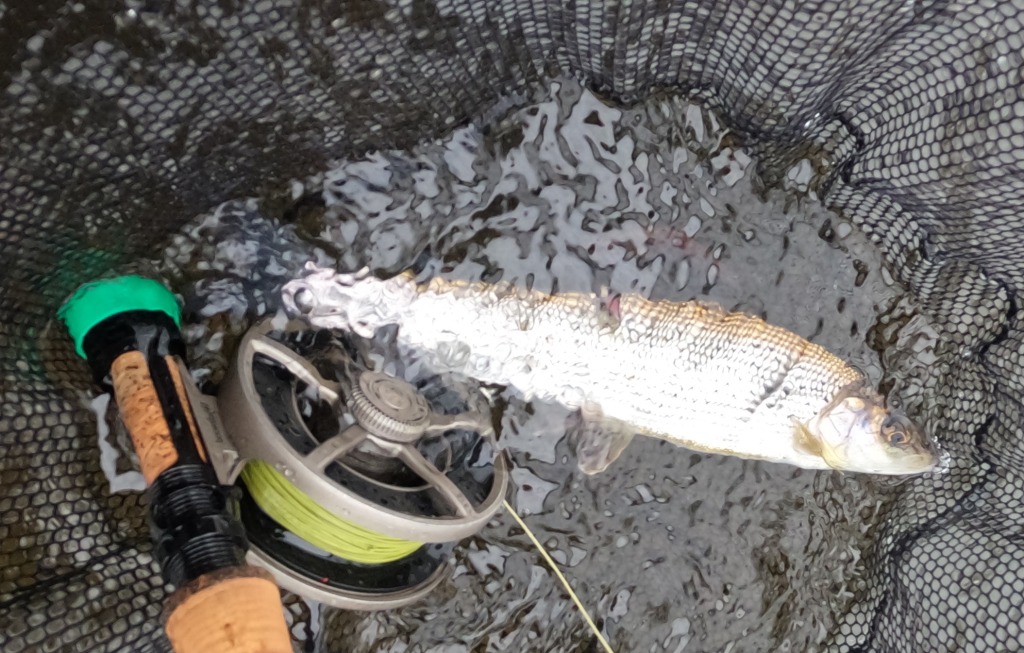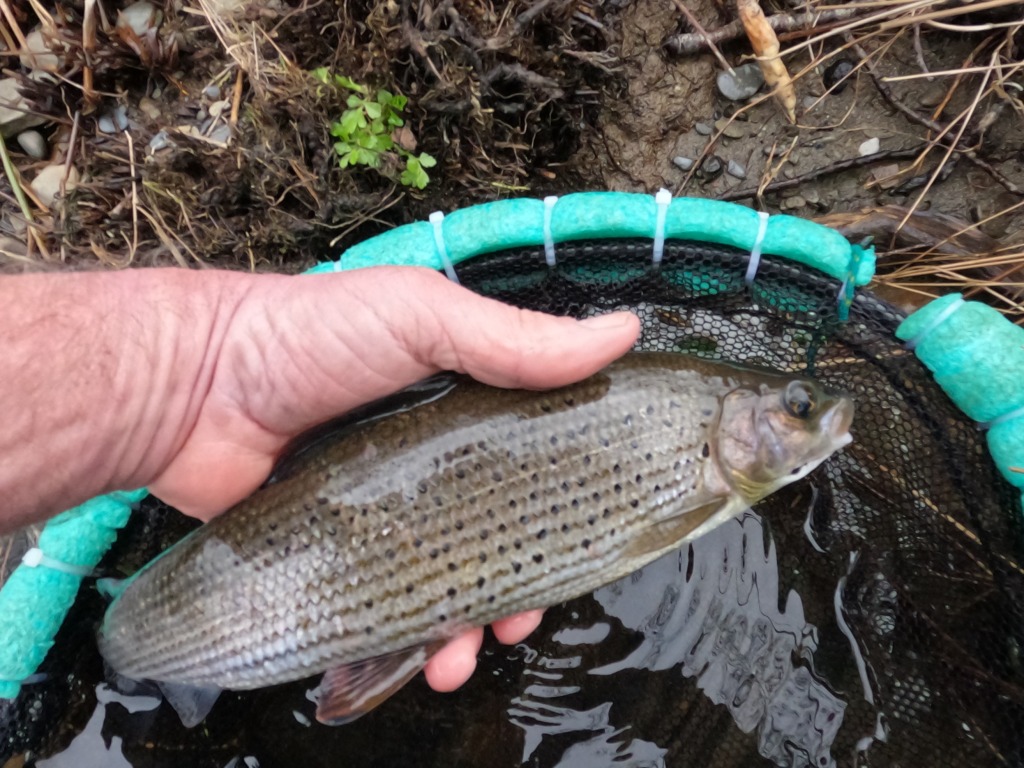
It is early March here in mid-Wales and spring is trying to bring a burst of new life to town. There are daffodils on every grass verge and new lambs are starting to populate the local fields, despite the lingering winter chill. It isn’t warm but it is warmer than it was, which means that at least the grass and car have been devoid of hard frost most mornings. The breeze, if it appears, will cut through you to your kidneys, and the trees are yet to regain their foliage, although it shouldn’t be long coming. In short, there is new hope, everywhere you look.
The trout season on the rivers opened up a week ago and my only foray within season to date, resulted in little more than a damp sock and a cold foot; the waders are going to require some investigation as to the problem, which is minor, but annoying all the same.
So today, as a pre-amble to the Wales-France Six Nations Rugby I decided to put in a couple of hours on the Newbridge Water. It is close enough that if things turn horrible outside I can easily pack it in and be home in front of the fire in not more than minutes.
The Wye, which has been raging and discoloured for the most part has dropped down and cleared nicely, even the tannin staining which seems to put the fish off a bit has mostly dissipated. It would have been nice if the sun had decided to join the party, but at least the rain held off and the waterproofs were left back in the Jimny.
The valley is now filled with the sounds of bleating sheep and lambs, it seems that the noise level is greatly increased when there are newborns about, mothers trying to locate babies and the children doing much the same. Such that there is a cacophony of bleats on all sides.
One cannot help but smile at the lambs though, they are cute as buttons, with that big baby eye thing going on, which simply makes all baby animals and in particular mammals, seem so much more attractive than their adult counterparts.
Boringly, apparently it has to do with the fact that baby animals are born with pretty much full sized eyes, whilst the rest of their bodies have some catching up to do. It would seem, that because the cornea has no blood supply and can, therefore, grow no more, the eyes have to be pretty much fully formed at birth.
This “big eyed” face picture, used much in cartoon characters, eye lined and mascaraed ladies and prevalent in babies causes some level of over-stimulation to our brains, making us feel the need to love and nurture. I am not quite so sure that all of that was affecting me as I tackled up next to the sheep fields, but certainly I wouldn’t have found it easy to look at a lamb chop squarely in the face, having watched this neonates gamboling with one another around the pasture.
However, musings about lambs and eyes needed to be put to the back of my, obviously overly active, mind, there was fishing to be done.
It was only my second trip out since the start of the season, it was still pretty darned cold and the river, although lower than previous days, wasn’t exactly stagnant. I had tied up some 4mm tear drop bead nymphs in preparation should they be needed, although, as things turned they weren’t required. I didn’t require much heavier than 3mm tungsten. I would have preferred to have been casting dries, although that can’t really be expected to produce result this early in the season and I was keen to get my score card ticking. So opted for a Euro-nymph outfit, whilst hedging my bets and keeping a double taper line and long leader in the back of my vest, just in case.
As things turned out, I did see a few small mayflies come off the water and a single, small and splashy rise.
I probed the currents with the nymph rig and produced nothing but the odd twig fishing through the first run. I hadn’t planned on being out long or trying too hard, but was keen to at least find a fish.
In the next run and having changed flies, weights more than patterns really, to better suit the conditions at hand, I had a very subtle take and landed my first brown trout of the season. An inconsequential fish, but for the fact that it was the first trout of my first full season here in Wales.
Not a few casts later I hooked into a moderate grayling, again unremarkable, but for being the first one of those for the season too.
I plodded on, my damp and chilly right foot, putting me off a bit, but I figured I would carry on for another thirty minutes or so before calling it a day. Then another subtle take, which I initially took to be yet another hook up on one of the many sunken twigs than have been blown into the water over the winter months.
But happily the twig pulled back, and in fact did so with some gusto, resulting eventually in a better than average grayling in the net.
I haven’t done enough of this cold water fishing to know for sure, but I suspect that the light takes are a result of the cold water and the relatively slow metabolism of the fish. What I can say, is that if you are playing this game, it would appear important to strike at the slightest hesitation of the sighter, even if most of the time that results in a twig or a hook up on the bottom.
I fished on a bit more, without any further success and decided it was time to be back home, in front of the fire and the Six Nations Rugby. Unfortunately, Wales did less well than I had, and suffered another loss, but they are a new and inexperienced side and did show some amazing flare in both attack and defence. Hopefully their time will come soon. For now I am happy to have put three fish in the net, survived the cold and got my 2024-5 trout season underway with a win. Not a big win, and not particularly significant fish, but the first is always significant at some level no matter the size.






